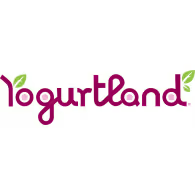Yogurtland is a self-serve frozen yogurt shop offering premium flavors and a wide array of toppings. The franchise typically operates in compact in-line store formats.

Key Insights
- Yogurtland began as a vision to create a unique dessert experience, evolving into a popular destination for customizable frozen yogurt creations with a wide array of flavors and toppings. This business model emphasizes customer choice and a fun, self-serve environment, contributing to its widespread appeal and growth.
- The franchise operates on a self-serve model, empowering customers to craft their ideal frozen yogurt combination from a rotating selection of premium flavors and fresh toppings. This approach simplifies operations for franchisees and provides a consistent, engaging experience for patrons seeking a personalized treat.
- Operating within the vibrant frozen dessert industry, Yogurtland taps into a consumer demand for convenient, indulgent, and customizable treat options. The business benefits from this market's ongoing popularity and adaptability to evolving consumer preferences for quality ingredients and innovative flavors.

Franchise Fee and Costs to Open
Exploring the financial picture of Yogurtland gives insight into both the upfront commitment and the potential revenue opportunity. According to FDD Item 7, opening this franchise typically involves an investment in the range of $294,900 - $637,600, along with a franchise fee of $30,000 - $40,000.
Financial Performance and Revenue
Yearly gross sales of $725,473 and estimated earnings of $87,057 - $108,821 show the potential financial performance of this franchise. These figures are crucial for prospective franchisees as they help to project revenue and profitability. They offer insight into the business's ability to generate income and can be used to compare its performance against other investment opportunities. The Franchise Payback Period of 5.3-7.3 provides an estimation of the time it might take for an owner to recover their initial investment. This metric is a key consideration for anyone evaluating the financial viability of a franchise, as it relates directly to the speed at which the business can become profitable. A shorter payback period can indicate a faster return on capital, which is a significant factor in making an informed decision about a franchise investment.
Training and Resources
Yogurtland provides new franchisees with comprehensive training. This program, typically spanning two weeks, takes place at Yogurtland's corporate headquarters. Franchisees receive operational guidance and learn about brand standards. Yogurtland also offers a robust support system and resources designed to assist franchisees in establishing their business. Ongoing support and access to established marketing materials are also provided.
Legal Considerations
Legal considerations for a Yogurtland franchisee are outlined in the Franchise Disclosure Document (FDD) and the Franchise Agreement. Note that this franchise discloses lawsuits and/or bankruptcy information in its FDD, which may impact your evaluation. Subscribe now to access more details and be sure to consult a qualified attorney before proceeding.
Challenges and Risks
Franchisees may encounter considerations regarding local market saturation and the need for differentiation in a competitive landscape. The operational complexity of maintaining product quality and consistent customer experience across multiple flavors and toppings presents an ongoing focus. Reliance on specific supply chains for proprietary ingredients and frozen yogurt bases is another factor to consider for consistent availability.



